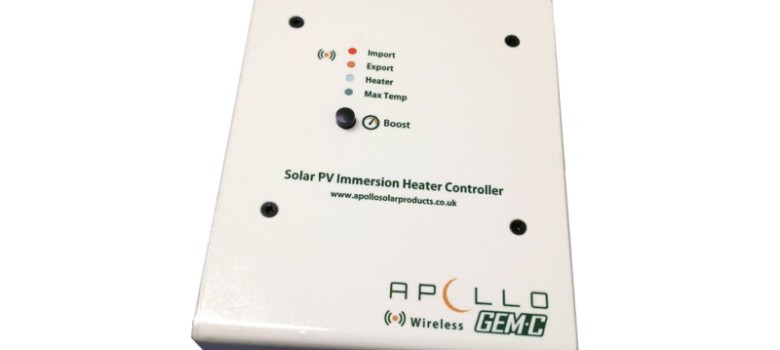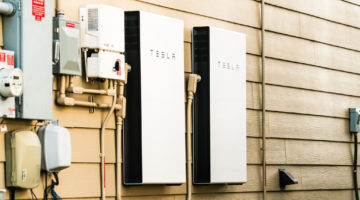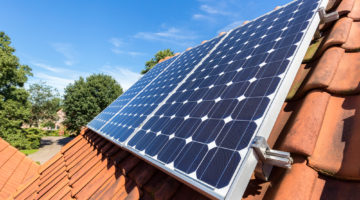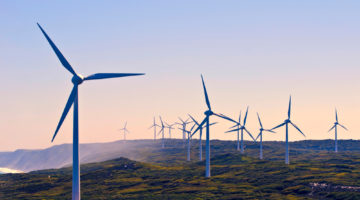
UPDATE: The Feed-In Tariff is now closed for new applications. To find out about the new scheme designed to replace it, click here.
We get a fair few comments regarding solar power diverters here at TheGreenAge. These clever little gadgets prevent electricity produced from your solar panels from being exported back to the grid by diverting the electricity to the immersion instead.
Why send excess electricity to your immersion?
The reason for doing this is that under the Feed-in tariff, very few people have an export meter fitted as part of their solar installation – instead the Government assume you are exporting 50% of what is generated and pay you this accordingly. Therefore if you can use all the electricity that you produce in your home instead of exporting it then not only do you still benefit from the maximum feed-in tariff payments available you also benefit from the maximum energy savings.

On the whole these solar power diverters (also known as solar PV optimisers) divert the electricity to the immersion. They monitor the electricity being consumed in the home and the electricity being produced by the solar panels – as soon as there is a surplus being produced they divert this to the immersion unit – without the power diverter in place, this electricity would normally be exported back to the grid – this is where the most common question we get arises.
A common misconception regarding solar power diverters
If the Solar power diverter kicks in at 70 watts surplus PV output, this would not be enough to power the immersion heater, these heaters are rated at 3kW, so would consume at least 3000 watts therefore the extra 2930 watts will be dragged from the grid and electricity bills would be very large.
Excess grid power should be fed to the grid until sufficient power is available to operate the appliances, 70 watts will not do it.
Well obviously if this was the case it would rather limit the effectiveness of a solar power diverter! Pulling in the shortfall of electricity from the grid would in fact cost you a huge amount of money. Fortunately on the whole they don’t work like that. We spoke to Bob Morris, founder of the Apollo Gem Solar power diverter system and he said the following:
The truth about solar power diverters!
A TV and most other appliances that require an electronic power supply can only operate using full mains voltage and the power for which they are rated. If you were to restrict the power flowing into such appliances they will not operate – put simply the TV would not be on!
On the other hand a heating appliance such as an immersion heater is a pure resistive load and will work at any power regardless of the rated power. In other words a 3KW immersion element will work quite happily if you were to restrict the power flowing into to say 1.5KW but it would only produce half of its rated heat energy.
Our Apollo GEM system electronically regulates the power flowing to such heating devices according to the export power available, just like you can restrict water flow by partially opening a tap.
If the available export power is (say) 70W then the gem will restrict the power flowing into the immersion to 70W even if the full power rating of the element might be 3000W. This ensures that no grid power is imported to run the immersion.
A system that simply waited until 3KW of export power was available and then turned on the immersion fully would be very inefficient and only be able to save a few percent of the power exported.
So there you have it! A solar power diverter monitors both electricity being consumed by the house and electricity being produced by the solar system and will only divert when there is a surplus of electricity being produced – so hopefully that puts to bed a common misconception of how these clever little units work!
Think we missed something? Do you have a different opinion?
Comment below to get your voice heard…












This sounds like a great idea for immersion heaters, but immersion heaters are much less efficient than a heat pump. Can you use one of these solar diverters to direct power into, for example, an air source heat pump that would generate 2-3x more hot water? Since a heat pump is not just a resistive load I assume that they need a higher power input before they work. Can a heat pump be run from one of these diverters at a reduced power level and still provide some level of heat recovery?
Its very unlikely that you could run a heat pump under such reduced power conditions. The electric motors used in the heat pump compressors have very specific power requirements and would not run at all otherwise.
We have a two phase supply to our property. The PV system feeds one phase on which there is a modest load most of the time, though it can peak., But the main (house) load is on the other phase. We only have a single (smart) power company meter. How would your diverter work with this setup?
What will happen if a smart meter is installed which monitors actual electricity exported. Is it still cost effective to use surplus electricity through a GEM system?
A believe it would be cost effective (depending upon feed in tariff rate) as the power company will only give you a few pence for the power you generate compared to the higher rate they charge to supply you with power. So use what you generate first then use theirs second.
Could a solar power diverter be used to charge an electric vehicle?
No. The charger requires a particular supply capacity in terms of power to work. i.e. the electronics within the charger. The diverted power of limited capacity can be used within an emersion because this load is purely resistive; there are no active components,
As you probably need a constant supply of hot water your cylinder will normally be full of water at the designated temperature. The diverted power will not therefore be heating water that is already at the correct temperature – apart from those times when hot water is drawn from the cylinder at the time power is being diverted. In other words the use of excess power is unlikely to be maximized,
Would you therefore need two immersions with the lower one powered by the solar optimizer and the upper one by grid electricity?
Can I use this with an unvented hot water cylinder? Something like this: https://www.manomano.co.uk/catalogue/p/rointe-roma-150-litre-domestic-hot-water-heater-8421614
Many thanks.
I have an ‘eddi’ device next to my hot water tank. The device is plugged into the old immersion heater cable that links directly to the distribution board. How can the device distinguish between the flow from the grid and the flow from the PV panels if its leads come only from the distribution board whose terminals are shared and common between the grid and PV panels. I can see how the device could work if wired so that it had a dedicated link to the PV panels and not the common terminals in the distribution board. Thanks for your help.
The inverter is connected directly to the consumer unit. The mains is connected directly to the consumer unit. Each of these two sources is providing a voltage of 230 volts available to drive current through any connected appliance. The immersion heater is one such device connected to the consumer unit- how can the so called diverter know which of the driving sources of voltage (mains or inverter) is actually driving the current? The current in the immersion heater is there because the consumer unit terminals provide 230 volts. My diverter has just a single connection to the consumer unit and I cannot see how it can know whether the current in the immersion lead has been driven by the mains or the inverter. The system could work with an additional, dedicated and isolated lead to the diverter from the inverter.
Thank you for your time. Tim
Same with this one Tim did you ever answer this question???
Hi Tim did you ever get a reply to this as I have the sam dilemma?
Can this system be modified to allow one to swap between heating hot water or, at the flick of a switch, use the surplus power to run an electric powered central heating system – this system is completely separate from my hot water heating and draws 9KWh at just under 40 amps.
I have had a diverter attached to an old immersion heater for many years and it produces enough free hot water to turn off my gas boiler during April and not turn on again till October. However a word of warning the clamp that attaches to incoming power supply and speaks to the diverter. has been put out of action by my new Smart Meter So no more diverted electricity the power company that did this refuses to rectify the problem my smart meter is also interfering with my wifi. Any ideas how this problem can be rectified???
I have a very basic question many may have asked but it baffles me.
Lets say my roof is producing 3Kw. My inverter is connected through the solar production meter straight into my consumer unit, the incoming grid is also connected to my consumer unit through my consumption meter. If my home is using 2.5 Kw how can I be sure it is all from my roof and not the grid?
Am I missing some part of the science? Or maybe Im just thick???
Many Thanks in advance,
Craig
The sellers of these power diverter devices dont tell you that it does not work in cases where you are not allowed to export or if you use a off grid inverter like an Axpert or Growwatt